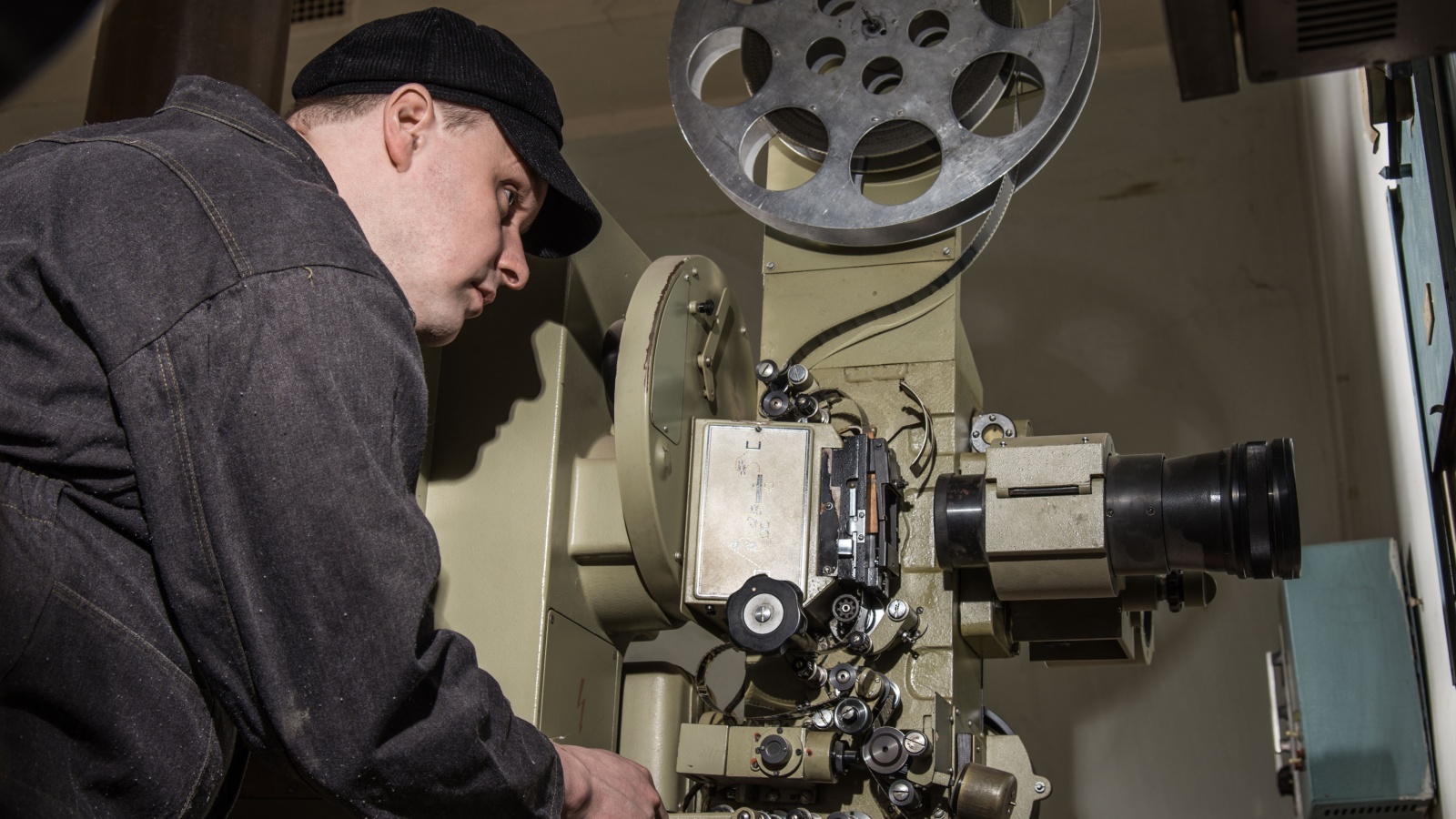Canada’s workforce has evolved dramatically over the past century, leaving behind professions that once defined communities, industries, and daily life. Many of these jobs disappeared due to automation, urbanization, and shifts in technology. From milkmen navigating icy roads at dawn to telegraph operators sending urgent messages across provinces, these careers played a vital role in shaping Canadian identity. Here are 21 Canadian jobs that don’t exist anymore.
Milk Delivery Driver

Before supermarkets stocked endless milk cartons, delivery drivers brought fresh bottles straight to doorsteps. The milkman’s daily route was a morning ritual across Canadian suburbs from the 1940s to the 1970s. Customers left empty glass bottles and notes by the door for refills. However, as refrigeration improved and grocery stores expanded, demand dwindled. By the 1980s, most dairies had ended home delivery, unable to compete with the convenience and lower costs of self-service milk. The few remaining services in places like Ontario and Alberta eventually shifted toward nostalgia-driven local businesses rather than full-time employment.
Switchboard Operator

Before smartphones, every phone call required a human to manually connect it. Switchboard operators, often women, worked in busy telephone offices, plugging and unplugging cables to route conversations. In the mid-20th century, these workers were the backbone of communication across Canada. The rise of automated switching systems in the 1960s slowly eliminated the need for human operators. By the 1980s, computerized systems handled most calls, and Bell Canada phased out nearly all operator roles. While the job once offered reliable employment and a social hub for women, automation permanently rewired the career landscape.
Ice Cutter

Long before electric refrigerators, ice cutters harvested massive blocks of ice from frozen lakes during winter. These workers braved sub-zero conditions, sawing, hauling, and storing ice for year-round use. Cities like Montreal, Ottawa, and Winnipeg had thriving ice industries in the late 19th and early 20th centuries. However, the advent of electric refrigeration in the 1930s made their labor obsolete almost overnight. By mid-century, mechanical ice-making replaced natural ice harvesting entirely. Today, the job survives only in museum demonstrations and heritage festivals celebrating the grit of early Canadian winters.
Telegraph Operator

The telegraph was once the fastest way to communicate across vast distances. Operators mastered Morse code and worked for railways, news agencies, and government offices. From the 1850s through the early 20th century, telegraphy was vital for everything from stock prices to train schedules. But with the spread of telephones and, later, digital communication, the need for skilled telegraphers faded. The last Canadian telegraph service, operated by CNCP Telecommunications, was officially discontinued in 1988. What was once a respected, technical profession became a historical footnote in Canada’s communication revolution.
Elevator Attendant

Luxury hotels, banks, and department stores once employed elevator attendants to operate manually controlled lifts. Dressed neatly in uniforms, they ensured safety and added an air of class to urban establishments. By the mid-20th century, automatic buttons replaced manual levers, eliminating the need for human operators. In Canada’s major cities, the role gradually disappeared after the 1970s, surviving only in a few high-end or heritage buildings for aesthetic charm. While their politeness and professionalism left a mark on urban life, technology quite literally elevated society beyond them.
Beaver Trapper

During the fur trade era, trapping was one of the most lucrative professions in the country. Beaver pelts were Canada’s first global export, making trappers vital to the economy from the 1600s through the 1800s. However, overhunting, conservation laws, and the decline of the fur market gradually ended large-scale trapping. By the late 20th century, environmental awareness and synthetic fabrics further reduced demand. Today, trapping exists only in niche, regulated forms in rural and Indigenous communities, a shadow of what was once the foundation of early Canadian commerce.
Film Projectionist

Before digital projectors and streaming platforms, film projectionists operated reels in cinemas, threading 35mm film through massive machines. They had to adjust focus, change reels seamlessly, and manage light intensity. It was a skilled, technical job that often went unnoticed unless something went wrong. By the 2010s, digital projection systems replaced manual operation entirely. Major Canadian theatre chains like Cineplex retrained or laid off projectionists as films went fully digital. What once required hands-on precision now happens with the click of a software button.
Railroad Telegraphist

This specialized job combined communication and logistics. Telegraphists at railway stations relayed messages about train schedules, cargo, and emergencies. They ensured coordination across Canada’s sprawling rail network from the late 19th to mid-20th centuries. As radios and computerized systems replaced telegraph lines, the role disappeared. By the 1980s, automated dispatch and radio communications had rendered the telegraphist redundant. The decline of manual rail communication marked not just a technological shift but also the end of an era where human precision kept trains safely on track.
Door-to-Door Encyclopedia Salesperson

Once considered a respectable and persuasive career, encyclopedia salespeople roamed Canadian neighborhoods offering knowledge in neatly bound volumes. During the 1950s to 1970s, brands like Encyclopaedia Britannica were seen as household essentials. However, the internet and CD-ROM encyclopedias in the 1990s made door-to-door selling unnecessary. Google and Wikipedia sealed the profession’s fate completely. By the early 2000s, encyclopedia sales vanished, along with the days of cold calls, briefcases, and polite refusals at suburban doorsteps.
Pinsetter

Before automatic pinsetters became standard, bowling alleys hired workers, often teenagers, to manually reset pins after each frame. The job was noisy, fast-paced, and occasionally hazardous, as flying bowling balls were common. The first automatic pinsetter was introduced in the 1950s, quickly transforming the industry. By the 1960s, Canadian bowling alleys adopted automation nationwide. The role vanished entirely within a decade, replaced by machines that never needed a paycheck or lunch break.
Coal Delivery Worker

Coal once powered Canadian homes through harsh winters. Delivery workers hauled heavy sacks from trucks to basements, often in freezing temperatures. It was grueling work but essential to daily comfort in the early 20th century. The widespread adoption of natural gas and oil heating systems in the 1950s rendered coal delivery obsolete. As cities modernized, coal yards closed, and delivery routes vanished. What was once a common sight in urban neighborhoods became a relic of Canada’s soot-covered industrial past.
Letterpress Printer

Before digital publishing, printing involved intricate machinery and manual skill. Letterpress printers arranged metal type by hand, applied ink, and pressed paper sheets to create books and newspapers. The trade required precision and artistry, thriving from the 1800s until the 1960s. Offset printing and computer design technologies eventually replaced letterpress methods. While boutique studios still preserve the craft for artistic purposes, the profession as a full-time job disappeared decades ago, marking the end of tactile, hands-on printing in Canada’s publishing world.
Lamp Lighter

Before electric streetlights illuminated Canadian cities, municipal workers manually lit gas lamps every evening. Armed with long poles, they traversed city streets to ignite and later extinguish lamps. The job was essential in 19th-century urban centers like Toronto and Montreal. The introduction of electric lighting systems in the early 1900s eliminated the need entirely. By 1910, most Canadian cities had transitioned to electricity, making lamp lighters among the earliest casualties of modern infrastructure. Their work remains immortalized only in vintage photographs and historical archives.
Typist Pool Clerk

Large corporations and government offices once employed entire rooms of typists dedicated to producing correspondence, reports, and forms. The role required impeccable accuracy and speed on manual typewriters. With the rise of personal computers and word processors in the 1980s and 1990s, typist pools vanished. Office software allowed managers and staff to create documents independently, eliminating a once-common job that primarily employed women. The shift marked both a technological leap and a transformation in gendered office work.
Log Driver

During Canada’s logging boom, log drivers guided floating timber down rivers using poles and hooks. It was among the most dangerous jobs, demanding balance, strength, and courage. The work peaked in the late 1800s, especially in Quebec and British Columbia. With the advent of trucks and rail transport for timber, river driving ended by the mid-20th century. Environmental regulations and safety concerns sealed its fate. Today, it’s remembered in folk songs and festivals, but it is no longer a real occupation.
Radio Drama Performer

Before television dominated entertainment, Canadians tuned in to radio dramas—live, scripted shows featuring actors, sound effects, and orchestras. The CBC produced dozens of programs during the 1930s to 1950s. Performers specialized in voice acting and live improvisation. However, as television became mainstream in the 1960s, funding and audience interest waned. By the 1970s, radio drama was largely discontinued in Canada, with a few nostalgic revivals later on. The performers who once brought soundscapes to life became victims of visual storytelling’s rise.
Streetcar Conductor

Streetcars were once the main form of public transit in cities like Toronto and Montreal. Conductors collected fares, maintained order, and ensured passenger safety. The job flourished from the 1910s through the 1940s but began declining as automated fare systems and bus routes replaced traditional streetcars. By the late 1950s, most Canadian cities had phased out conductors altogether, leaving Toronto as one of the few with heritage streetcars. Today’s light rail operators perform similar duties, but the personable, fare-collecting conductor is gone.
Morse Code Coast Guard Operator

For decades, Canadian Coast Guard officers used Morse code to communicate with ships. Operators sent and received emergency messages, often during treacherous weather conditions. The role required focus, precision, and technical training. Satellite communication and digital navigation systems made Morse code obsolete by the 1990s. The last official Morse code distress signal from a Canadian station was sent in 1999, marking the end of an era in maritime communication. Modern systems now handle what once took intense manual skill.
Paperboy

For generations, teenagers pedaled through neighborhoods tossing newspapers onto porches before sunrise. The job taught responsibility and provided pocket money for thousands of Canadian kids from the 1950s to the early 2000s. However, as print media declined and digital news subscriptions rose, demand for home delivery workers evaporated. Major newspapers like The Globe and Mail and Toronto Star drastically reduced print circulation, effectively ending the iconic paper route tradition. Today, “paperboy” nostalgia remains, but the occupation itself has folded with the print era.
Video Store Clerk

Every Friday night in the 1990s meant a trip to the local video store to rent VHS tapes or DVDs. Clerks managed returns, suggested movies, and rewound tapes for the next customer. Chains like Blockbuster and Rogers Video were social hubs across Canada. The arrival of Netflix, digital rentals, and streaming services obliterated physical rental stores by the early 2010s. The once-bustling aisles of movie boxes and membership cards became empty storefronts, leaving behind only the memory of late fees and weekend movie plans.
Toll Booth Collector

Toll booths along highways and bridges once required human collectors to accept cash and make change. Workers endured long shifts in small cabins through Canadian winters. As electronic tolling systems like Ontario’s Highway 407 ETR introduced transponders and license plate billing, the job disappeared rapidly. By the 2010s, most toll plazas across the country had gone fully automated. What was once a routine, human-centered job now operates entirely without personal interaction, reflecting the steady automation of everyday transactions.
21 Products Canadians Should Stockpile Before Tariffs Hit

If trade tensions escalate between Canada and the U.S., everyday essentials can suddenly disappear or skyrocket in price. Products like pantry basics and tech must-haves that depend on are deeply tied to cross-border supply chains and are likely to face various kinds of disruptions
21 Products Canadians Should Stockpile Before Tariffs Hit
